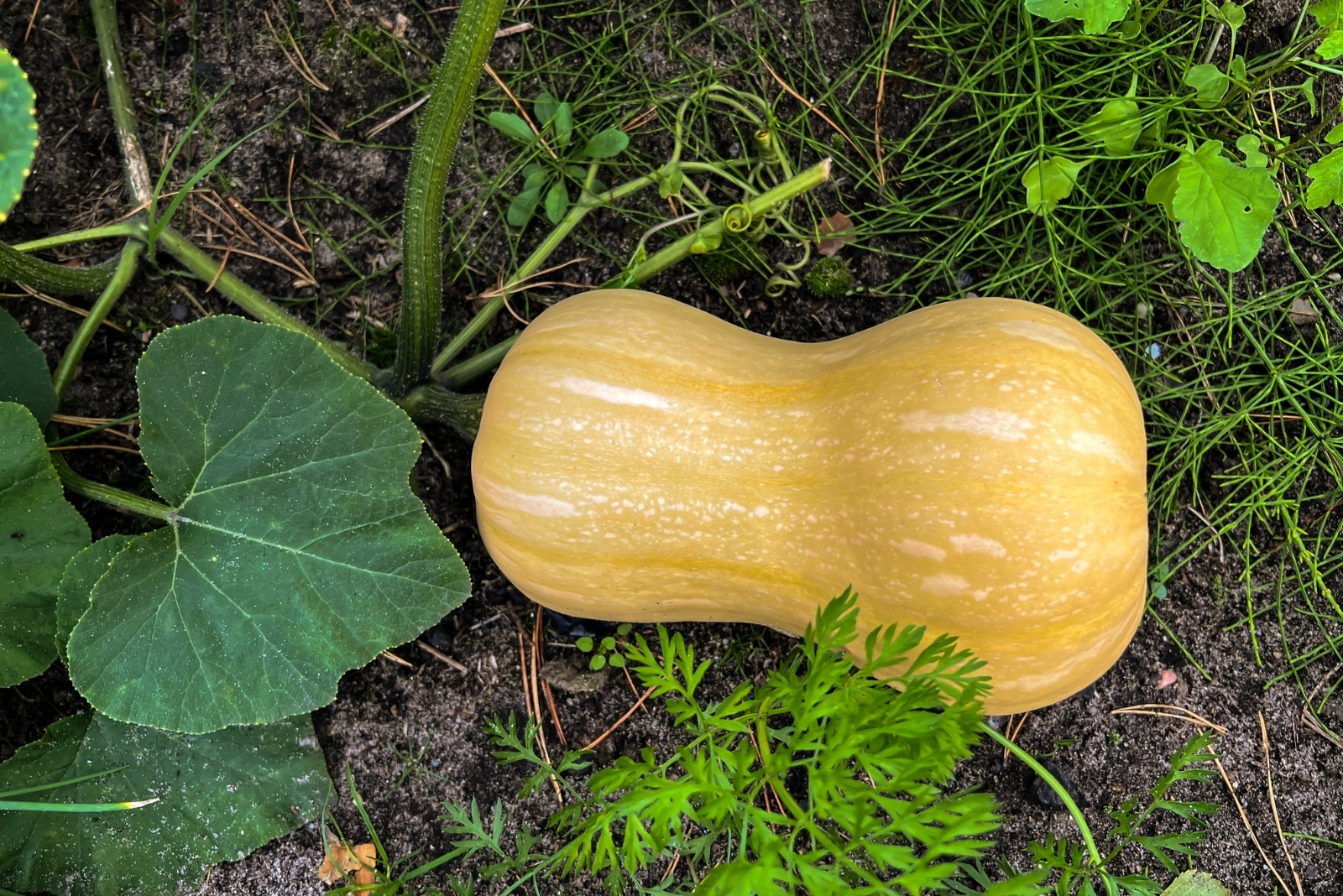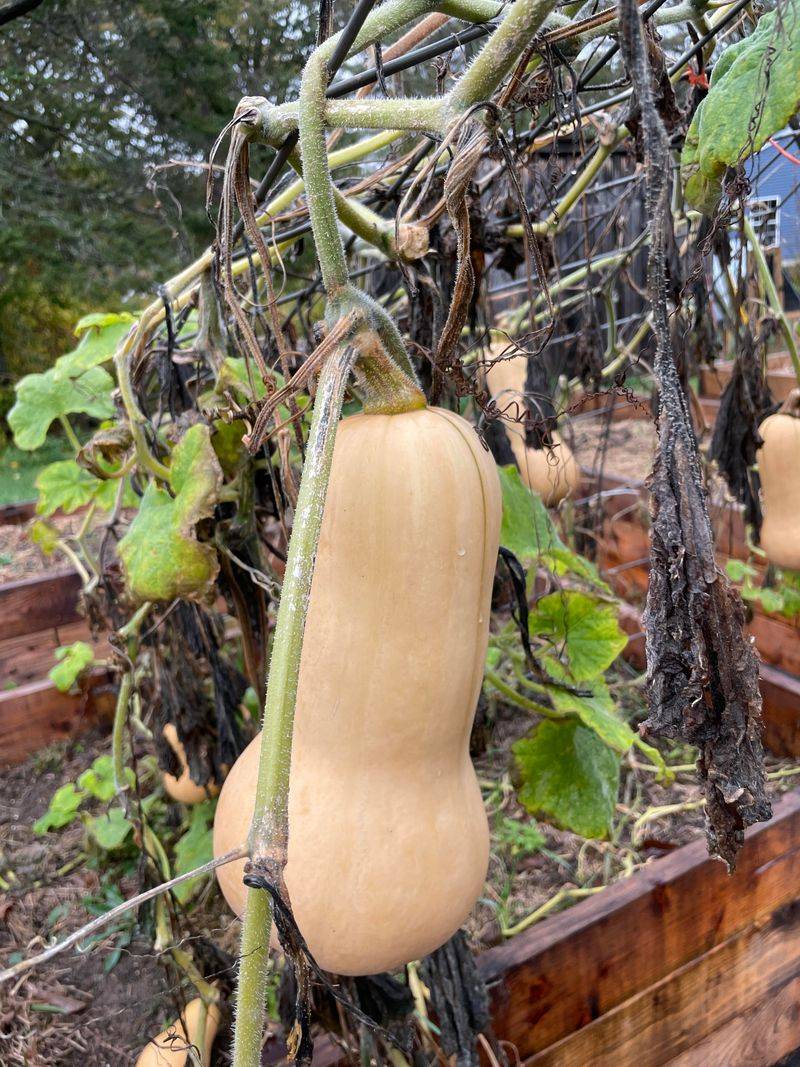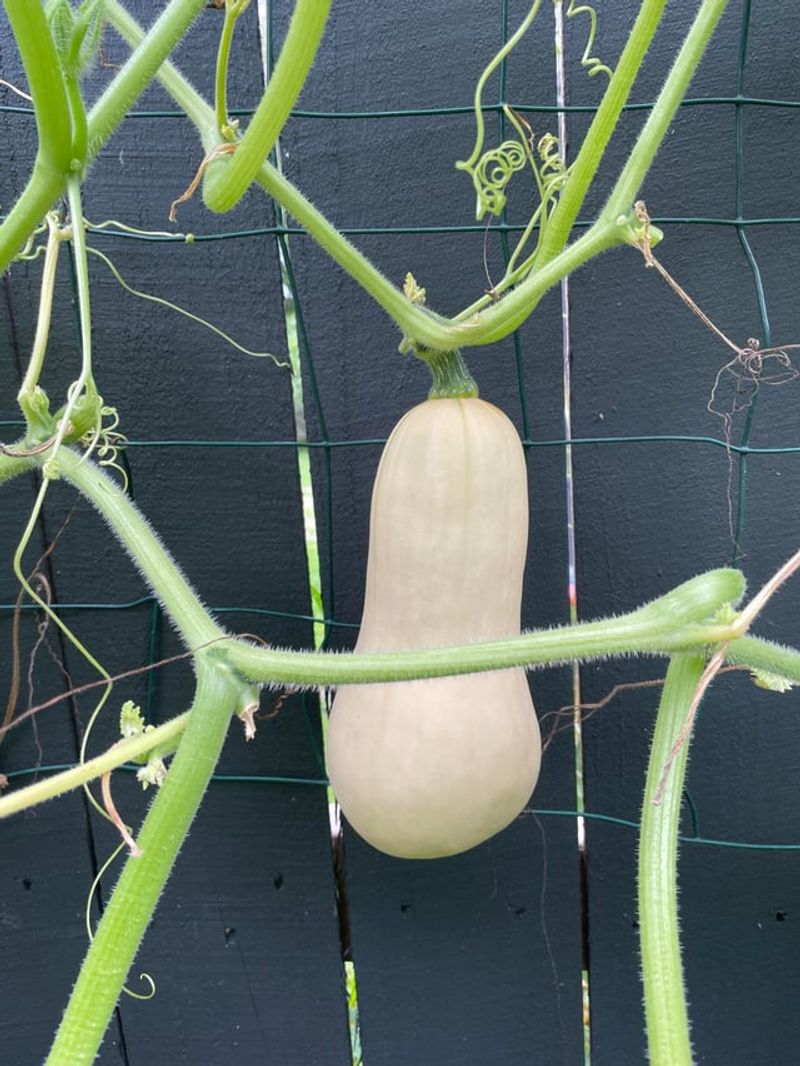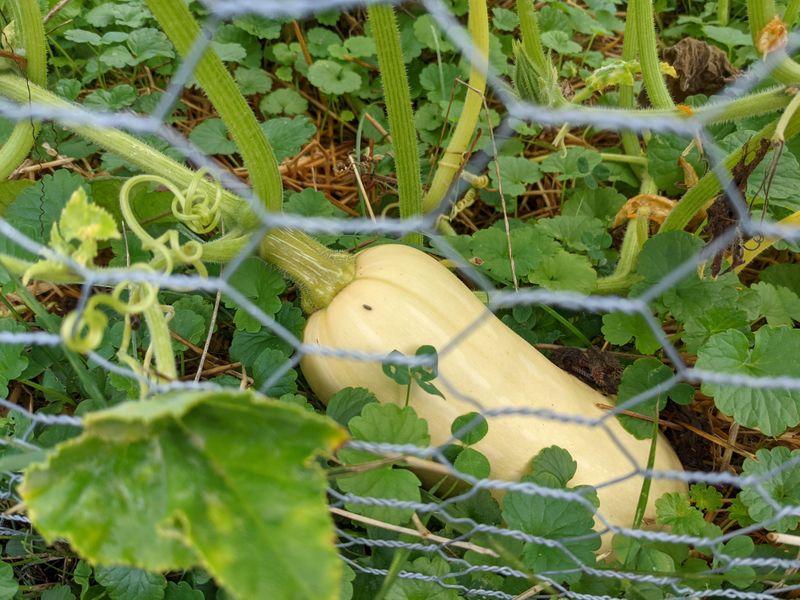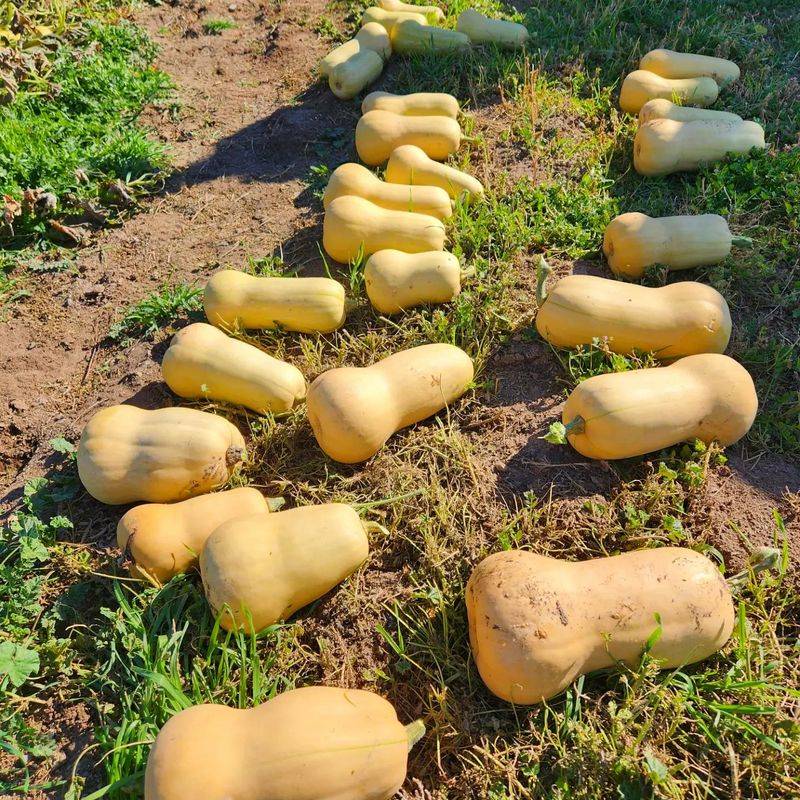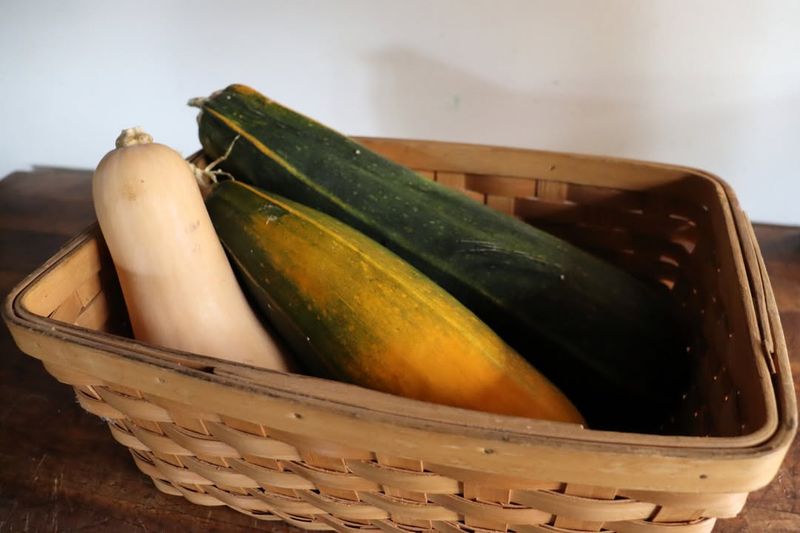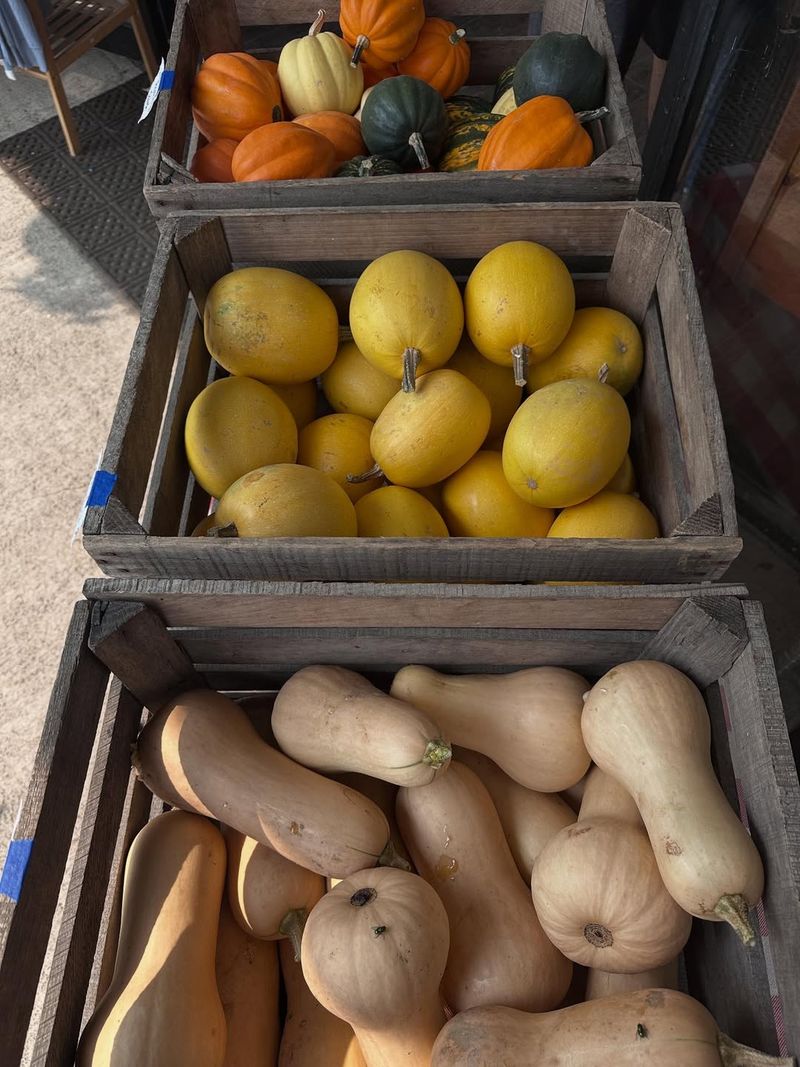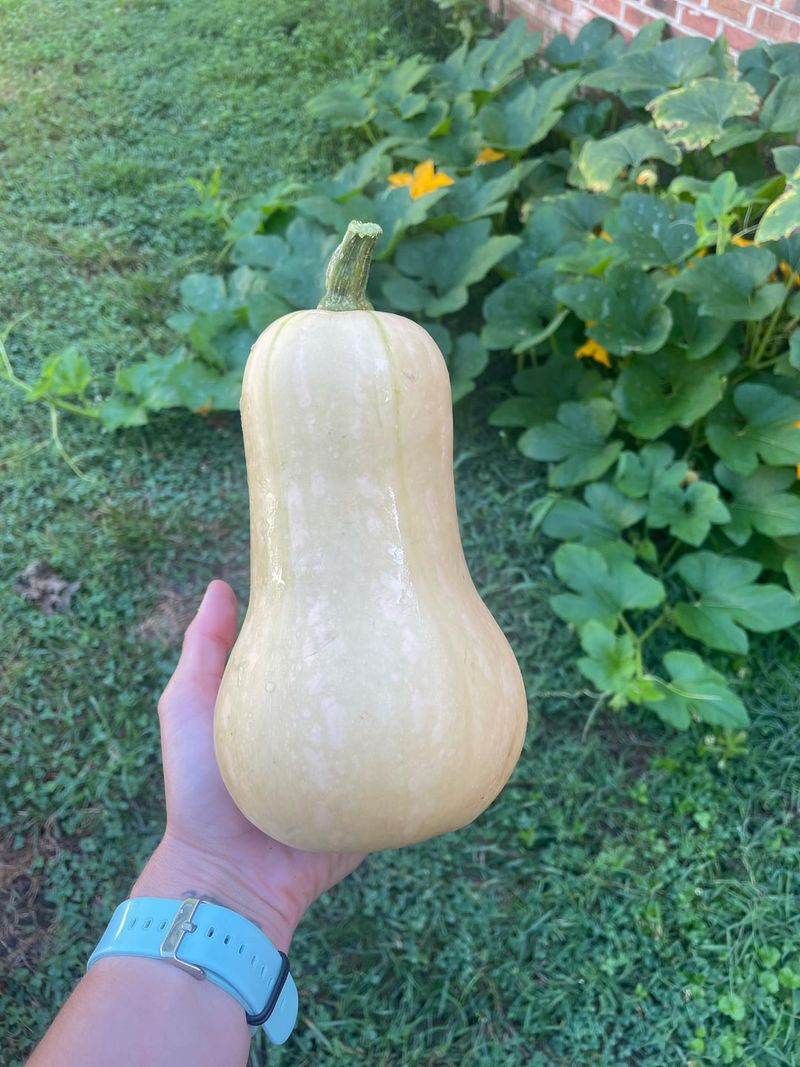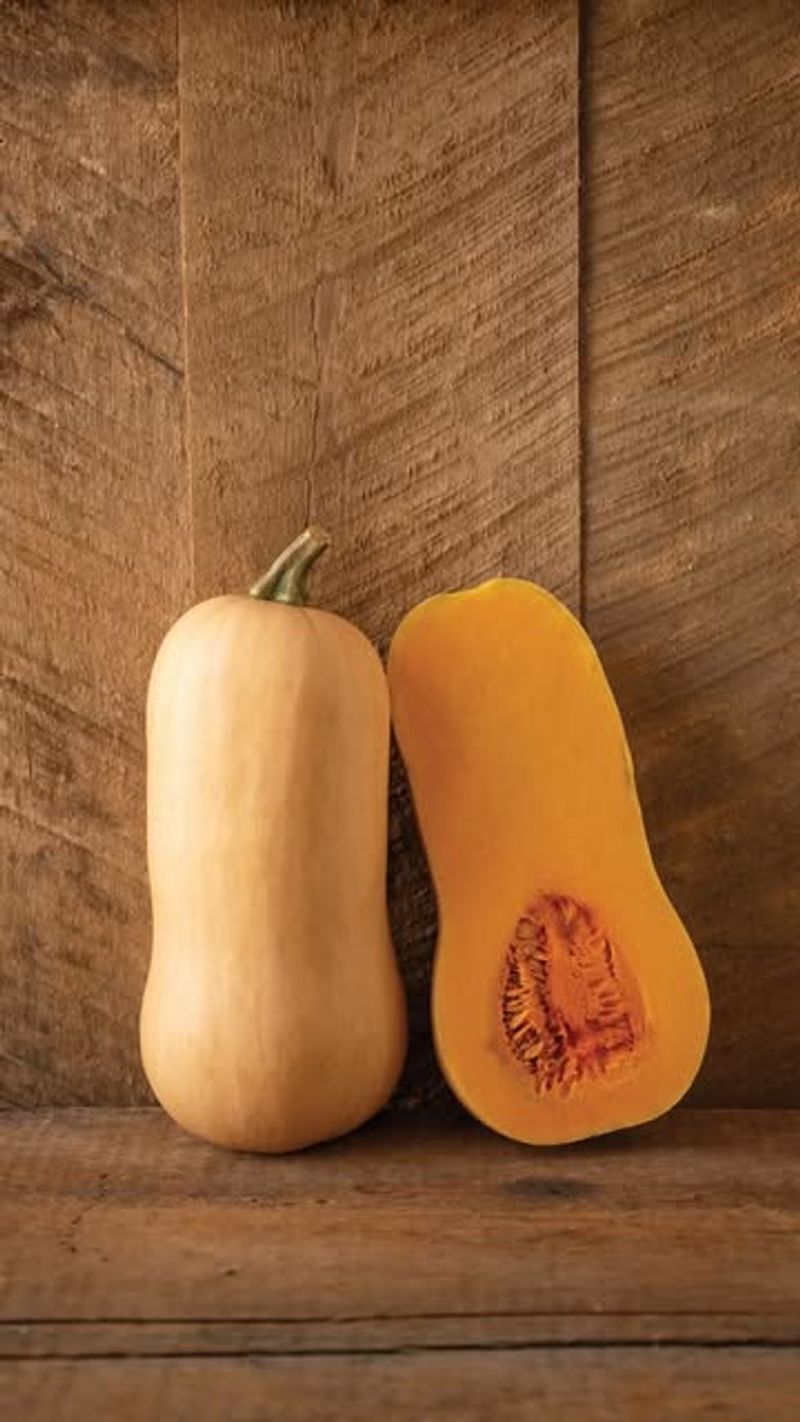Florida gardens are overflowing with butternut squash this season, and knowing how to harvest it properly makes all the difference.
Picking at the right time ensures sweet, creamy flesh that lasts. With a few smart storage tricks, you can enjoy your squash long after the harvest. Handling it correctly turns a bountiful crop into months of delicious meals.
1. Wait For The Right Color Change
Color tells you everything about ripeness. When your butternut squash turns from greenish to a deep, uniform tan or beige color, it’s getting close to harvest time.
Florida’s warm climate can speed up this process, so check your squash regularly during the fall months. Any green streaks or patches mean the squash needs more time on the vine.
A fully mature squash will have a rich, consistent color all over its skin, signaling it’s packed with flavor and ready to pick.
2. Check The Stem Condition
Look closely at where the stem connects to the squash. A dry, brown, corky stem indicates the squash has stopped taking nutrients from the plant and is fully mature.
If the stem still looks green and moist, your squash isn’t quite ready yet. In Florida’s humid conditions, you might notice the stem drying faster than in cooler regions.
Always leave a few inches of stem attached when cutting to prevent rot during storage and extend shelf life significantly.
3. Test The Skin Hardness
Try pressing your thumbnail firmly into the squash skin. If it resists and doesn’t puncture easily, the squash has developed its protective hard shell and is harvest-ready.
Immature squash will have softer skin that your nail can pierce without much effort. Florida gardeners should perform this test on multiple squash to gauge overall crop readiness.
A tough exterior means the squash will store well and resist damage from handling or minor bumps during transport.
4. Harvest Before The First Frost
While Florida rarely experiences harsh frosts, cooler northern areas of the state can see occasional cold snaps. Even a light frost can damage your squash and reduce storage quality.
Most Florida gardeners harvest butternut squash between October and December, depending on when they planted. Monitor weather forecasts during late fall to time your harvest perfectly.
If unexpected cold weather threatens, pick all mature squash immediately to protect your hard work and ensure maximum freshness for your family.
5. Cure Your Squash Properly
After picking, cure your squash in a warm spot for about two weeks. Curing toughens the skin and heals any small cuts, which dramatically improves storage life.
Florida’s natural warmth works perfectly for this process. Place squash in a sunny spot, garage, or covered porch where temperatures stay around 80-85 degrees.
Good air circulation prevents mold, so space them out and turn them occasionally. Properly cured squash can last six months or longer in storage.
6. Store In Cool, Dry Locations
Find the coolest, driest spot in your Florida home for storage. Basements are rare here, so consider air-conditioned closets, pantries, or spare rooms.
Ideal storage temperatures range from 50 to 60 degrees, though slightly warmer works if humidity stays low. High humidity encourages rot, which can be challenging in Florida’s climate.
Check stored squash monthly for soft spots or mold. Remove any damaged ones immediately to prevent problems from spreading to healthy squash nearby.
7. Handle With Care During Harvest
Use sharp pruning shears or a knife to cut squash from the vine, never twist or pull them off. Rough handling creates bruises that become entry points for bacteria and rot.
Leave several inches of stem attached to each squash for better storage results. Florida’s heat can make vines brittle, so work during cooler morning hours when plants are more flexible.
Carry harvested squash gently in baskets or crates with padding to avoid bumps that compromise the protective skin and shorten storage time.
8. Avoid Washing Before Storage
Skip washing your squash before storage. The natural waxy coating on the skin protects against moisture loss and decay, which is especially important in humid Florida conditions.
Simply brush off loose dirt with a soft cloth or your hand. Washing adds unnecessary moisture that can promote mold growth during the curing and storage phases.
If you notice stubborn soil, let it dry completely, then gently brush it away. Clean squash only right before you’re ready to cook and enjoy them.

